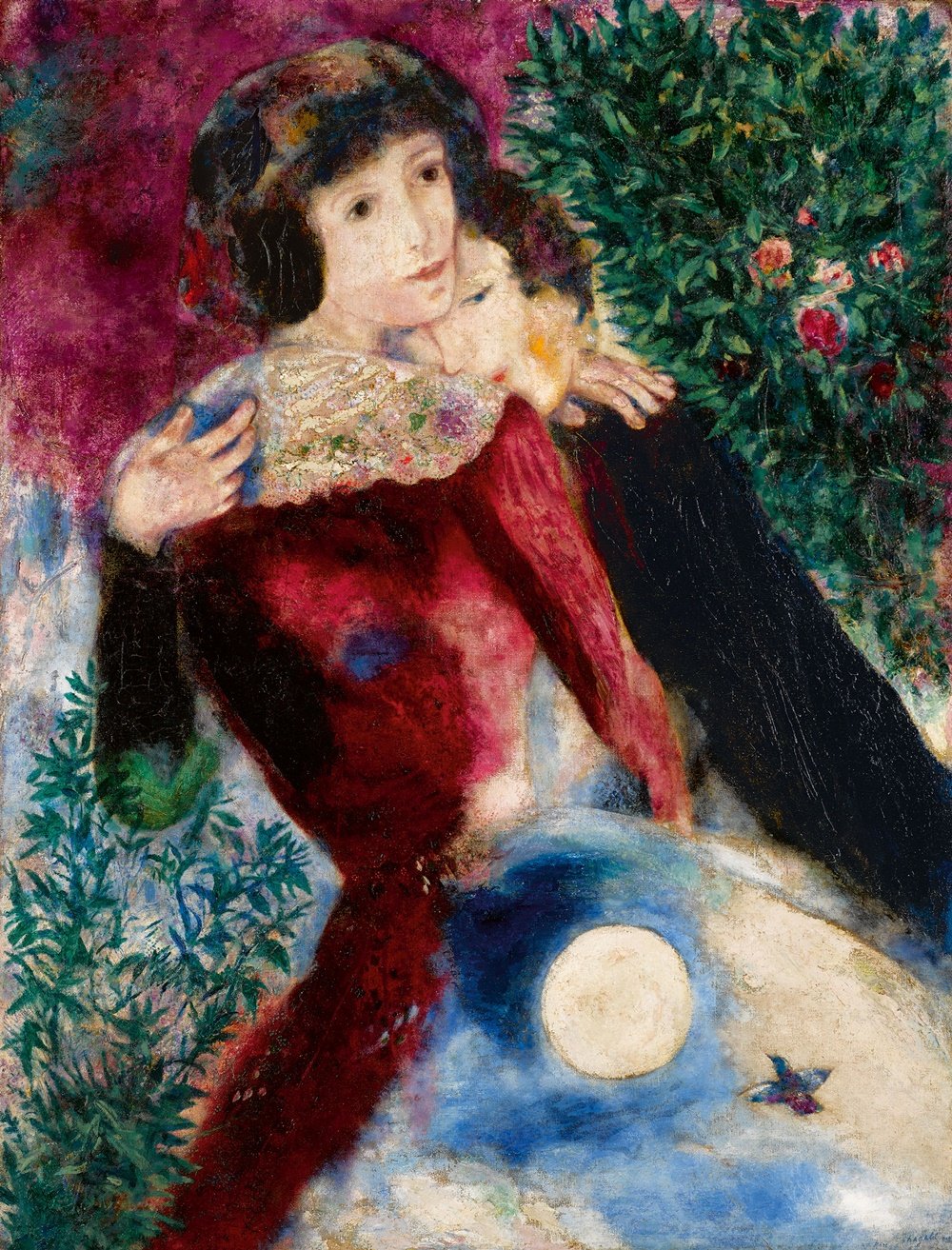
“You’re not going to get another Chagall this big, I don’t think,” quipped auctioneer Helena Newman on Tuesday evening at Sotheby’s sale of Impressionist and Modern art. Newman was coaxing the house’s James Mackie, the head of the department in London, and Patti Wong, chairman of Sotheby’s Asia, to bid up the Russian-French artist’s 10-foot-wide Le Grand cirque (1956), which was estimated to sell for up to $15 million, during a six-minute contest, the night’s longest. Wong emerged victorious, getting the work for her client for a total of $16 million.
All told, the 64-lot sale made $269.7 million, almost $25 million shy of its high estimate of $294.5 million. (Sales totals include the house’s fees; estimates do not.) The total represented a 71 percent increase over last year’s sale, which netted just $157.7 million. Upward of 90 percent of the works on offer found buyers. And after remaining in place for 27 years, Chagall’s auction record was broken.
Marc Chagall, Le Grand Cirque, 1956. Courtesy Sotheby’s.
Wong, in particular, had a very busy evening. Asian buyers took home half of the evening’s top 10 lots. She went after several of the night’s most impressive prizes, securing Claude Monet’s Les Glaçons, Bennecourt (1893), which depicts a thawing river Seine, for $23.4 million—the night’s third biggest sale. Estimated at up to $25 million, the painting was guaranteed to sell, backed by either the house or Sotheby’s and a third party. It hammered at the low end of its estimate. It last came to auction in 1983, also at Sotheby’s, where it sold for $605,000.
Claude Monet’s Les Arceaux de roses, Giverny (1913). Courtesy of Sotheby’s.
Another Chagall, Les Amoureux (1928) (pictured at the top), was the night’s top lot at $28.5 million. It went to a Russian buyer courtesy of the house’s Irina Stepanova, managing director of Sotheby’s Russia. The total set an auction high for the artist.
Chagall paintings come to auction regularly (more than 100 at Christie’s and Sotheby’s in New York in the last year), but Les Amoureux was distinguished by having been in the same family for the nine decades since it was painted. The price outstripped the artist’s previous high, $14.9 million, set at Sotheby’s New York in 1990.
Despite the historic nature of the night for Chagall, the price history for his Grand Cirque told a slightly more sober story. The seller had acquired it at Sotheby’s New York in 2007 for $13.8 million at a euphoric moment for the art market, so while the work set a record, it advanced in price by only $2.2 million in a decade—a testament to the slowing of the market for the Impressionist and Modern sector in recent years.
Similarly, Monet’s Les Arceaux de roses, Giverny (1913) sold for $19.4 million, becoming the night’s fourth-highest lot. Showing rose-covered trellises in the artist’s garden, the canvas had come to auction at Christie’s London in 2007, when the European collector who offered it on Tuesday paid $17.8 million. Consequently, its advance in price, too, was modest over a decade.
Claude Monet, Les Glaçons, Bennecourt (1893). Courtesy of Sotheby’s.
The atmosphere in the salesroom was at times quiet, and the night’s top lots failed to elicit very active bidding. Draining some of the drama out of the whole spectacle, fully one-half of the works were guaranteed to sell ahead of time, either by the house or a third party, representing about 40 percent of the low estimate for the night.
The sale followed Monday night’s Impressionist auction at Christie’s, which totaled $479.3 million, soundly beating the night’s presale estimate of $360 million. But the week will really pick up speed on Wednesday, when Christie’s offers a Leonardo da Vinci, Salvator Mundi, for some $100 million.
Pablo Picasso’s Buste de femme au chapeau (1939), sold for $21.7 million. Courtesy of Sotheby’s.